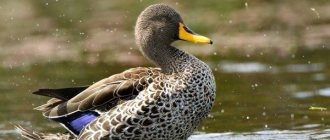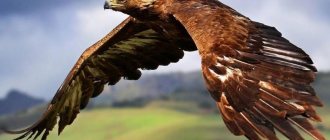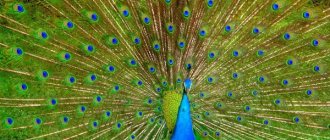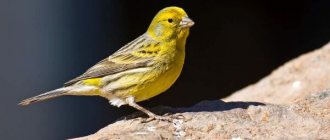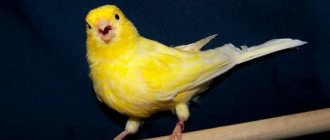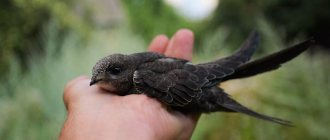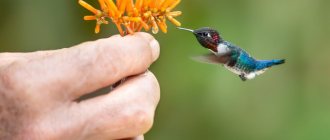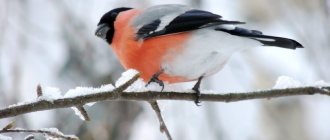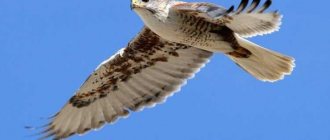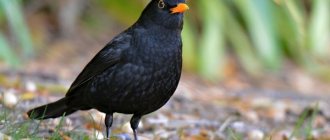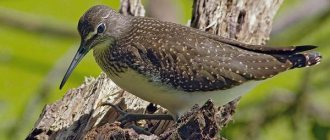The bird of the world, the most numerous representative of birds in the urban environment, the famous courier - all this is about the pigeon. This representative of the fauna has been living next to humans for more than 5,000 years and performs many positive functions for him. In today's article we will tell you everything about pigeons: their appearance, species diversity, habitat, life expectancy and raising offspring. You will also learn how to breed, keep and train pigeons at home.
Urban Rock Pigeon
Description, structure, characteristics
Surely every person has seen pigeons, because there are quite a few of them on the streets of our cities, and there are places, such as St. Mark's Square in Venice, where there are simply a great many pigeons.
However, there are actually as many as 35 different species of pigeons, and they all differ from each other. For example, the crowned pigeon from Papua New Guinea is the largest pigeon in the world, its weight can be up to 3 kg. And the Diamond Striped Dove from Australia, on the contrary, is the smallest representative of the pigeon kingdom, its weight on average is about 30 grams. Depending on the species, the color and habits of a particular pigeon may vary.
But in general, all pigeons have a dense build, a short neck and a long head. The length of a pigeon, depending on the species, can vary from 15 to 75 cm. The wing of a pigeon has 11 primary flight feathers and 10-15 secondary ones; the wings of these birds themselves are wide, long and usually rounded at the ends.
Pigeons also have a tail; they have a long one, at the end it can be either pointed or rounded and wide. Crowned and pheasant species of pigeons each have 12-18 feathers on their tail.
The beak of pigeons is usually short (but there are species in which it is longer), straight, thin, and with some widening at the base. At the base of the beak there is an area of bare soft skin called the cere.
Sexual dimorphism, the difference between male and female, is poorly developed in pigeons, but nevertheless, male pigeons are usually larger than females. Also, in some species of motley tropical pigeons, males have brighter colors than females.
The plumage of pigeons is thick, dense, usually gray and brown. In the tropics there live motley pigeons with bright multi-colored plumage.
The feet of these birds are short, four-toed, three toes in front and one in back. At the same time, they are very comfortable for walking.
Interesting fact: pigeons do not have a gallbladder. From this fact, some medieval scientists erroneously concluded that pigeons had no bile at all. Such a conclusion fit perfectly into the prevailing doctrine at that time about the four types of fluids that exist in the human and animal body (and all diseases were explained by a violation of the proportion of these fluids). And the supposed absence of bile in pigeons gave these birds a certain “divine character.” In fact, pigeons do have bile, it’s just secreted directly into the digestive tract.
Method of communication
Birds of the pigeon family are characterized by vocalization in the form of cooing . Anyone knows what sound pigeons make. They do this with their beak closed. Pigeon coos may vary depending on the age of the individuals. Hatched chicks make hissing or clicking sounds. Older children, when they see their parents or while feeding, begin to whistle and squeak.
Adult birds coo, making soft guttural sounds. During the mating season, males perform a kind of singing to attract a female. Muffled sounds are similar to a trembling howl or rumbling. When females hatch eggs, they make a special cooing sound, reminiscent of a cat's purr. It should also be noted that each feathered creature has a certain rhythm, tone, frequency and intensity of cooing.
Birds emit sharp and short calls as an alarm signal. One individual can give a sign of danger, but after it the whole flock takes off and flies away. Alarm sounds may be accompanied by loud flapping of wings, which is also used by males during the mating season.
Habitats
Almost everywhere, except, of course
Antarctica and the polar pole. Interestingly, there were times when the number of pigeons on our planet reached 5 billion individuals, although most of them died out due to deforestation in North America.
The largest variety of different species of pigeons is present in South America and Australia, where these birds live in tropical rainforests. And species such as the rock pigeon (which is what we most often see on the streets of our cities) live over a very wide geographical range.
Nutrition
The main food of pigeons is a variety of seeds, fruits of fruit trees, and berries. Pigeons living in cities often eat various food waste: wheat, corn, oats, barley. For this reason, these birds like to settle near human dwellings, here it is easier for them to find food for themselves. Some species of pigeons, being omnivores, can hunt insects.
Pigeons drink water by sucking it inside with their beak; this method of drinking for pigeons is atypical for other birds.
In general, pigeons are extremely unpretentious in food, and this is due, among other things, to their biology, since a pigeon has only 37 taste buds in its mouth, compared to the 100,000 receptors that we humans have.
Flight qualities
Pigeons are capable of long flights. They easily reach speeds of 60–75 km/h. Flight time is about 8 hours.
Interesting facts about pigeons:
- Average speed of a sport pigeon. From 70 to 120 km/h.
- The height to which birds can rise is 1.5 km. Pigeons draw rarefied air into special bags and breathe every once in a while.
- These birds successfully covered the distance from Rome to Brussels (via the Alps) of 1100 km. But the most enduring representatives are capable of flying up to 2000 km and reaching speeds of up to 150 km/h.
- Birmingham roller skaters have an interesting quality: during the flight they do a series of somersaults. Experts cannot yet explain why this happens, but the spectacle looks exciting.
- Salon rollers have a similar talent. True, they perform stunts on the ground, since they cannot fly.
- In a city where pigeons often live, you can observe an interesting picture. The bird actively flaps its wings, but does not fly. Her fluffy tail helps her stay in place.
Lifestyle
If you observe a little the behavior of ordinary city pigeons, you will notice that these birds have a very pugnacious character. It often happens that larger individuals drive their smaller relatives away from food without ceremony. Clashes between pigeons are also common, sometimes leading to death.
And here the dove “teaches life” to the sparrow.
Otherwise, pigeons spend all their time either sitting on tree branches (or poles, roofs of houses, high-voltage power lines) or looking for a snack.
Who needs pigeon meat
It is already clear that sisar meat is not only nutritious, but also has many health benefits. But in addition to its general strengthening function, pigeon meat can effectively prevent many diseases. Modern medicine, for example, recommends this product to people with kidney disease and high blood pressure to improve memory and regulate blood glucose. Cosmetologists also note the benefits of pigeon meat. They claim that this product can effectively affect the skin: make it soft, get rid of wrinkles and age spots.
This dietary product is useful for pregnant women, older people, as well as people recovering from serious illnesses or surgical operations. Pigeon is useful for treating and preventing anemia, various diseases of the blood, lungs and general weakness.
This product is also useful in the diet of obese people. Being a low-fat food with almost a quarter protein, it promotes healthy weight loss and restores amino acid balance.
Pigeons and man
Since ancient times, pigeons have been trained by humans; some of their species are excellent for training. So, since ancient times, even before the Internet era, people have used “pigeon mail” - specially trained pigeons delivered letters exactly to their intended destination. And some rich people kept (and keep) special decorative domestic pigeons in their homes.
Homing pigeons
There are many types of trained homing pigeons, but among them four best representatives can be distinguished: English Quarry, Belgian, Antreverp and Lütich. All of them are of medium size, similar in appearance to other pigeons, but what sets them apart is their developed “sense of home,” precisely this instinct that attracts the homing pigeon to return to its previous location and serves as a guarantee that the pigeon will fly exactly where it is needed. Also, all homing pigeons are especially hardy birds, and have a flight speed of up to 100 km per hour.
Domestic pigeons
Domestic pigeons are kept for beauty, although there are also special so-called meat pigeons, which some gourmets breed for meat. Decorative pigeons come in a variety of shapes and colors. The most popular breed of domestic pigeon at the moment is the tippler.
Sense organs
Pigeons have excellent eyesight. They can distinguish not only the colors of the rainbow, but also ultraviolet rays . Therefore, they are sometimes used in search and rescue operations. When they see certain shades, they give a signal in case of found objects or people wearing clothes of a certain color.
Any child can ask an adult why pigeons nod funny while moving on the ground. This behavior is explained by the peculiarities of vision. At the beginning of the step, the head of the feathered creature moves sharply forward and remains in this position until the body “catch up” with it. At this moment, the image is stabilized, so the bird can easily see any objects and moving objects.
Feathered creatures are able to detect sounds of lower frequencies than humans. When birds hear distant rumbles of thunder or the sound of strong winds, they leave the area for no apparent reason.
Common birds have long been used for postal communications. This is due to the fact that pigeons are able to find their way home. In a day, feathered creatures can travel up to 1000 km. Ornithologists explain this behavior of pigeons with their ability to detect magnetic fields and navigate by the sun. And British experts have determined through experiments that during the day birds use earthly landmarks, for example, roads or railway tracks.
Enemies in nature
In natural conditions, pigeons have plenty of enemies. First of all, these are other feathered predators that attack them right in the air: falcon, eagle,
hawk, kite and some other birds. On the ground, terrestrial predators are waiting for them: martens, ferrets, foxes and, of course, ordinary domestic cats.
Types, photos and names
As we wrote above, zoologists now count 35 species of pigeons + 2 species are unfortunately extinct today. Next we will describe some species that we think are interesting.
Dodo
He is also a dodo pigeon, just one of the extinct species of pigeons. And it became extinct thanks to the efforts of the largest predator on Earth - man. Living on the island of Mauritius, the Mascarene Islands and Rodrigues, the dodo had no natural enemies. He also did not fly, swam and ran poorly, reached 1 meter in height and laid only one egg per clutch. With the arrival of Europeans on these islands, the dodo was completely destroyed by them. Because of its gullibility, hunting it was not difficult, and dogs, cats and pigs brought to the islands actively devoured the eggs of this bird.
Rock pigeon
This type of pigeon could also be called the common pigeon, since this is what we most often see on the streets of our cities, squares, etc. It is widespread almost everywhere where people live, although initially this species lived only in Europe and Asia, Over time, it spread to both Americas, Africa and Australia.
Klintukh
This type of pigeon belongs to the wild pigeons. It has a bluish plumage, a neck with a greenish tint, a red craw and gray-blue wings. It lives in Africa, China, Turkey, Kazakhstan and a number of Middle Eastern countries.
crowned pigeon
Also refers to wild pigeons. It lives in the tropical forests of South America, Africa, Australia and a number of islands, such as New Guinea. The crowned pigeon got its name due to its specific crest, which is able to rise and fall depending on the mood of the bird.
Wood Pigeon
The pigeon pigeon, along with the crowned pigeon, is one of the largest representatives of the pigeon family. It differs from other pigeons in its neck, which has a bright greenish tint. Distributed in Europe and Asia.
Belgian pigeon
More precisely, the Belgian carrier pigeon; it is pigeons of this species that have proven themselves to be the best feathered postmen. They differ from other pigeons in their speed, endurance and excellent terrain awareness.
History of birds
The pigeon is a widespread species belonging to the family Pigeonidae class of birds. Europe, Africa and Australia are considered the homeland of feathered creatures. According to one version, the word “dove” comes from the Proto-Slavic golǫbь, which means “blue” or “blue”.
It is known from history that man tamed these birds in ancient times and bred many domestic varieties for different purposes.
During the period of the Great Geographical Discoveries, people transported with them not only their property, but also their feathered pets. After some time, domesticated birds went wild and spread widely throughout the world. However, they tried to live close to people, so today they are considered habitual inhabitants of cities and other populated areas. Today, these creatures can be found in almost every corner of the world, with the exception of Antarctica and the Arctic.
The genus of pigeons includes 35 species:
- Andamanese;
- Belogorsk;
- white-breasted;
- white-occipital;
- white-tailed laurel;
- Boninsky (extinct species);
- bronzeback;
- brown;
- wine red;
- pigeon;
- Himalayan;
- Guinean;
- yellowlegs;
- Cameroonian;
- Canarian;
- clintukh;
- Congolese;
- mottled;
- lemon dove;
- Madeiran;
- Nilgiri;
- olive;
- ashen;
- purple;
- San Tomei;
- silver;
- silverstripe (extinct species);
- gray;
- rocky;
- Somali;
- dark burgundy;
- Ceylonese;
- black and white;
- black;
- Ethiopian.
Pigeon breeders have bred more than 800 breeds of domestic pigeons, which differ in color, body shape and purpose. 200 breeds were bred in Russia.
The ancestors of modern pigeons are gray individuals (sizaki, sisari). They usually settle on coastal cliffs, in mountain gorges or along cliffs near rivers. Representatives of the pigeon family can also live near agricultural lands and bushes. Semi-domesticated descendants quickly adapted to the environment in which people live. Stone buildings remind feathered creatures of their habitat in nature. Food waste, which they easily find at all times of the year, is ideal for them as a food supply.
Reproduction
Pigeons are monogamous birds and create their families once and for all. While courting a female, the male spreads his tail, takes a stance, and in every possible way swells and spins around his chosen one. During this peculiar mating dance, pigeons coo. Sometimes a pair of love doves clean each other's wings and, touching their beaks, create some semblance of a kiss.
When a pair mates, the male mounts the female, maintaining balance with his wings. After this, a pair of pigeons builds a nest in some secluded place, where the female will soon lay eggs. In a year, a female can make up to 8 clutches, each of which will contain from 1 to several eggs.
The female hatches the eggs, although the male father can also replace her for a short time. Usually after 16-19 days, pigeon chicks are born, blind and with yellow down. In the first days, the parents feed them with burps from their crops, then they begin to produce seeds. Pigeon chicks grow and develop very quickly; within a month they acquire the ability to fly and become practically adult pigeons.
Keeping at home
To keep pigeons at home, the first thing you need to do is take care of the proper arrangement of the dovecote. When building it, it is necessary to take into account the breed of pigeons that will be kept there. So, for example, for postal and sporting breeds, it is necessary to provide devices for convenient takeoff and good landing. And decorative pigeons need more territory for walking. The dovecote should be kept in a place with natural sunlight and clean air. There must be good ventilation.
The dovecote should be equipped with a drinking bowl with fresh and clean water and a feeding trough. Also, pigeons must have special perches and places for nests.
Interesting Facts
Popular message topics
- Life and scientific work of Lomonosov
Mikhail Vasilyevich Lomonosov was born on November 19, 1711 in the family of a fisherman in the Arkhangelsk province. Lomonosov's childhood and adolescence were not easy; his mother died when Mikhail was 4 years old; from the age of 10 he fished with his father. - Raccoon
Raccoons are cute animals familiar to everyone. You can meet them not only in specially designated places, but recently they have also become quite popular as a pet. At the same time, you shouldn’t invent huge palaces for yourself. - Living cells
We are all living beings, be it a person, an insect, a plant, and all of us, consisting of numerous “bricks” called a cell. Our body consists of billions of small particles, where each cell is a small, actively functioning living thing.
Video
And in conclusion, an interesting documentary about pigeons.
Author: Pavel Chaika, editor-in-chief of Poznavaika magazine
When writing the article, I tried to make it as interesting, useful and high-quality as possible. I would be grateful for any feedback and constructive criticism in the form of comments on the article. You can also write your wish/question/suggestion to my email [email protected] or Facebook, with respect, the author.
Author page
